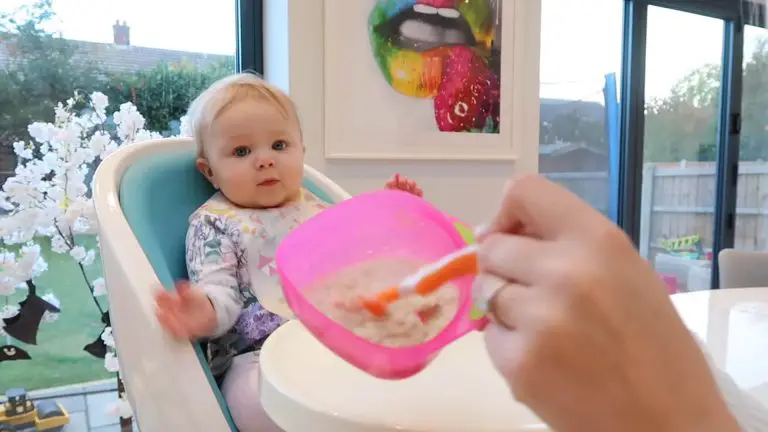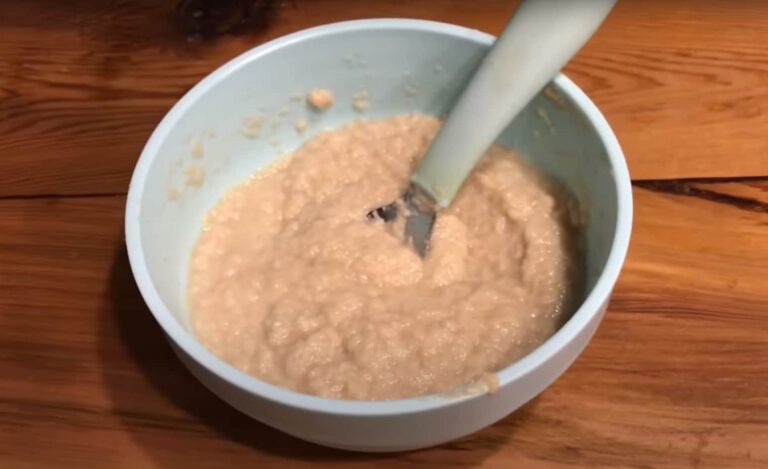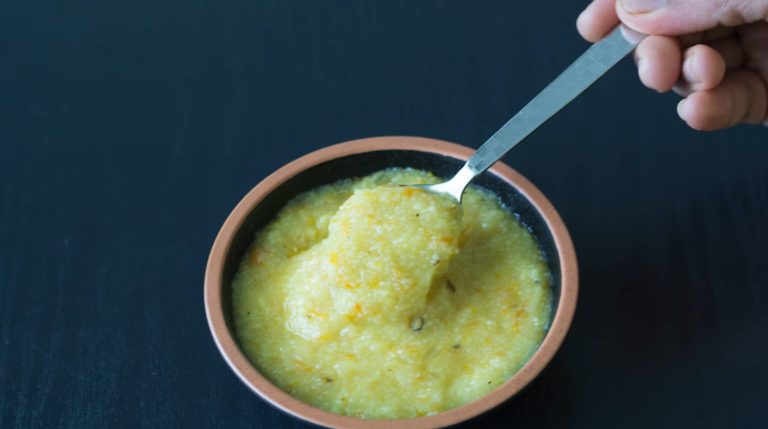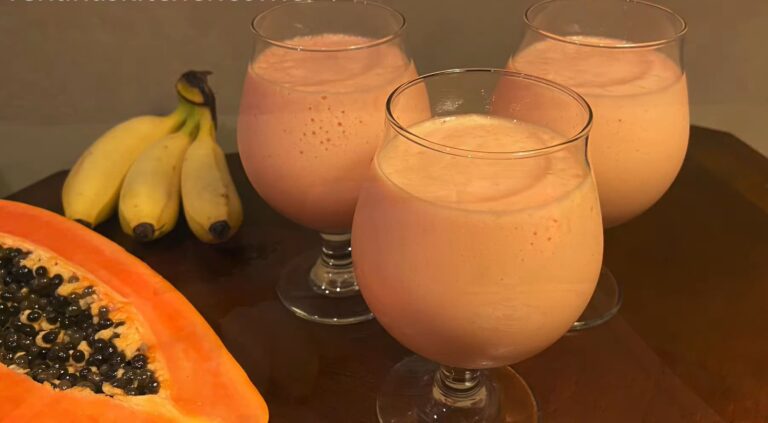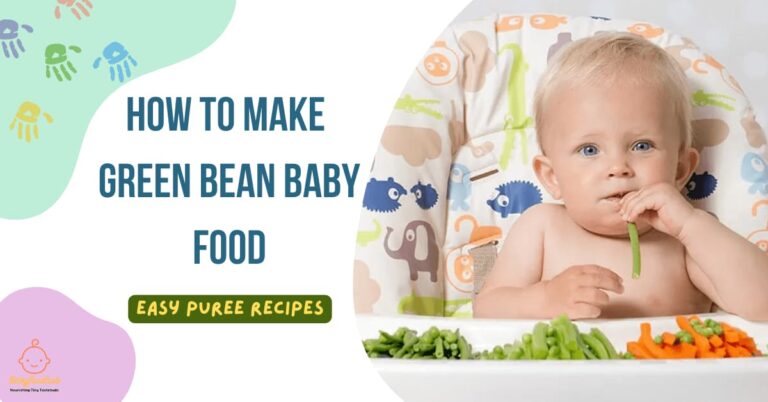How to make broccoli baby food
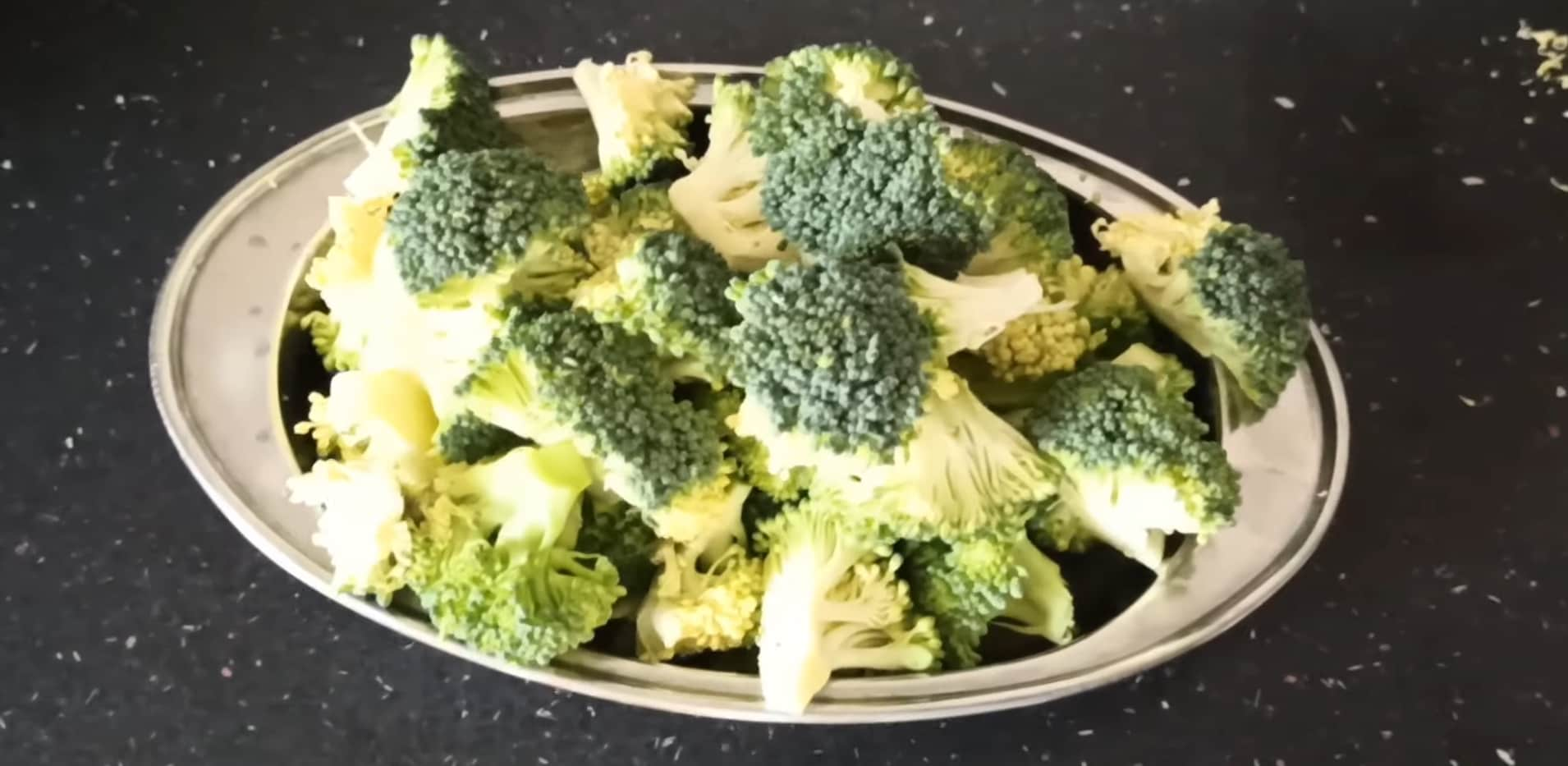
To make broccoli baby food, wash and cut the broccoli into small florets, steam them until tender, and then puree them in a blender or food processor until smooth. It’s important to introduce new foods gradually to babies, so start with small amounts and check for any allergic reactions before increasing the serving size.
Why Choose Broccoli For Your Baby’s First Food
Introduce your baby to the nutritional powerhouse of broccoli as their first food. Discover how to easily make homemade broccoli baby food that is packed with essential vitamins and minerals for their healthy development.
Nutritional Benefits Of Broccoli:
- Broccoli is packed with essential nutrients that support your baby’s growth and development.
- It is a great source of vitamins A, C, and K, which help support a strong immune system.
- Broccoli also contains calcium and iron, promoting strong bones and aiding in healthy blood cell production.
- High in fiber, it helps regulate your baby’s digestion and prevents constipation.
- Broccoli is low in calories and rich in antioxidants, contributing to overall good health.
Easy Digestion For Babies:
- The texture of steamed or pureed broccoli makes it easily digestible for babies.
- It has a mild and slightly sweet taste, making it a pleasing option for their developing palates.
- Broccoli can be smoothly pureed to a consistency that suits your baby’s stage of eating.
- Its natural fiber content helps regulate bowel movements, preventing digestive discomfort.
Introducing Variety To Their Diet:
- Offering broccoli as a first food introduces your baby to a range of flavors and textures.
- Adding variety to their diet from an early age helps expand their food preferences and reduces the likelihood of picky eating later on.
- Broccoli’s distinctive shape and vibrant green color make it visually appealing, stimulating their interest in trying new foods.
- As your baby grows, you can mix broccoli with other vegetables, grains, or proteins to create diverse and nutritious meals.
Broccoli offers numerous nutritional benefits for your baby, ensuring their growth and development while being gentle on their delicate digestive system. Its rich vitamin and mineral content, along with its digestion-friendly properties, make it an ideal choice for their first food.
Introducing broccoli early on also exposes your baby to a range of flavors and textures, setting the foundation for a varied and nutritious diet as they grow. So, let’s explore the wonderful world of broccoli and create wholesome meals that your little one will love!
Step-By-Step Guide To Making Broccoli Baby Food
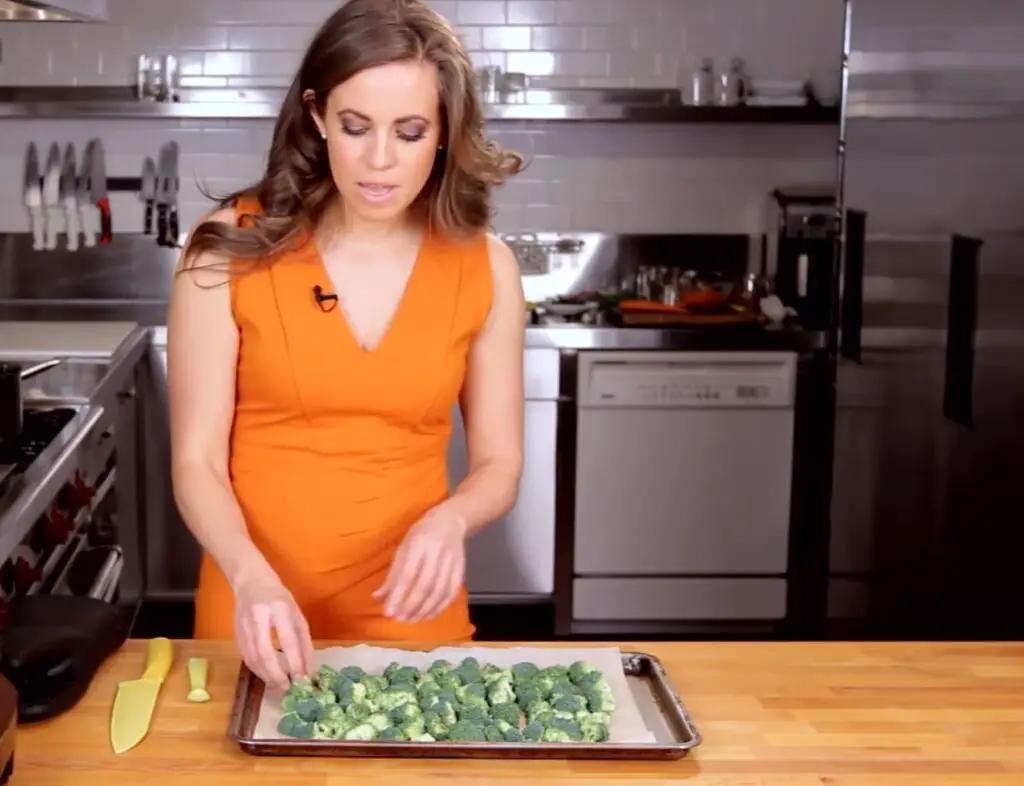
Learn how to make delicious and nutritious broccoli baby food with this step-by-step guide. Perfect for introducing your little one to healthy homemade meals.
Selecting And Preparing Fresh Broccoli:
- Choose fresh broccoli that has bright green florets and firm stalks, avoiding any that appear wilted or discolored.
- Wash the broccoli thoroughly under cold running water to remove any dirt or debris.
- Trim off the tough ends of the stalks and cut the broccoli into small florets for easy cooking.
Proper Cooking Methods For Retaining Nutrients:
- Steam the broccoli to retain maximum nutrients. Place the florets in a steamer basket over boiling water and cover with a lid. Steam for about 6-8 minutes until the broccoli is tender.
- Another option is to blanch the broccoli. Boil water in a pot, add the florets and cook for 2-3 minutes. Drain and immediately transfer the broccoli to a bowl of ice water to stop the cooking process.
Blending Or Mashing The Cooked Broccoli:
- Once the broccoli is cooked and tender, let it cool slightly before transferring it to a food processor or blender.
- Blend the cooked broccoli until smooth and creamy. You can also add a small amount of water, breast milk, or formula to achieve the desired consistency for your baby.
Storing And Freezing The Baby Food For Future Use:
- If you plan to use the baby food within a couple of days, store it in airtight containers in the refrigerator.
- To freeze the baby food for future use, spoon the pureed broccoli into ice cube trays or freezer-safe containers.
- Once frozen, transfer the broccoli cubes to a labeled freezer bag for easy storage. Make sure to use the frozen baby food within 2-3 months for best quality.
Remember, making homemade broccoli baby food is a fantastic way to introduce your little one to healthy and nutritious food. By following these simple steps, you can ensure that your baby gets the best start in their journey of solid foods.
Tips For Making Healthy And Tasty Broccoli Baby Food
Discover the secrets to creating nutritious and delicious broccoli baby food with these helpful tips. From steaming to pureeing, learn how to make this healthy option for your little one without sacrificing taste.
Making homemade baby food is a wonderful way to introduce your little one to different flavors and textures while ensuring they get all the necessary nutrients. When it comes to broccoli baby food, there are several tips and tricks to help you make it healthy and tasty.
From mixing broccoli with other vegetables or fruits to adjusting the texture for your baby’s preferences, and even experimenting with different cooking techniques, here are some suggestions to make your broccoli baby food a hit:
Mixing Broccoli With Other Vegetables Or Fruits:
Broccoli pairs well with other vegetables and fruits, allowing you to create interesting flavor combinations for your baby. Consider mixing broccoli with:
- Carrots: This combination adds a hint of sweetness and a beautiful orange color.
- Sweet potatoes: The natural sweetness of sweet potatoes complements the earthy taste of broccoli.
- Apples: Adding some grated or pureed apples can provide a touch of sweetness and natural freshness.
- Spinach: Combine broccoli with spinach to create a nutritious green blend that is packed with essential vitamins and minerals.
Adding Spices Or Herbs For Flavor Enhancement:
Introducing your baby to different spices and herbs can help develop their palate and make their food more exciting. Here are some spices and herbs that go well with broccoli:
- Cumin: A pinch of cumin can give a warm and aromatic flavor to your baby’s broccoli puree.
- Thyme: The subtle earthy taste of thyme adds a lovely depth to the overall flavor profile.
- Garlic powder: Adding a dash of garlic powder can provide a mild savory note.
- Turmeric: A small amount of turmeric not only adds flavor but also brings its anti-inflammatory properties.
Adjusting The Texture For Your Baby’S Preferences:
Babies have different preferences when it comes to texture, so it’s essential to find what suits your little one best. Here are some ways to adjust the texture of broccoli baby food:
- Smooth puree: Start by steaming the broccoli until tender, then blend it with a little water or breast milk to create a smooth puree.
- Chunky puree: As your baby starts to explore different textures, you can leave some small, soft chunks of broccoli in the puree for them to discover.
- Mashed consistency: Instead of pureeing the broccoli completely, mash it with a fork or potato masher to create a slightly textured consistency.
Experimenting With Different Cooking Techniques:
Cooking methods can significantly impact the taste and texture of broccoli baby food. Here are some cooking techniques to try:
- Steaming: This gentle cooking method helps retain the nutrients and natural taste of the broccoli.
- Roasting: Roasting the broccoli in the oven with a little olive oil can enhance its natural sweetness and add depth to the flavor.
- Boiling: Boiling the broccoli is a simple way to cook it, but be cautious not to overcook as it can result in a loss of nutrients and a less vibrant flavor.
Making broccoli baby food is a delightful adventure that allows you to introduce your baby to different flavors and textures. By mixing broccoli with other veggies or fruits, adding spices or herbs, adjusting the texture, and experimenting with various cooking techniques, you can create healthy and tasty meals your little one will love.
Get creative in the kitchen and enjoy the journey of discovering new flavors together!
Common Mistakes To Avoid When Making Broccoli Baby Food
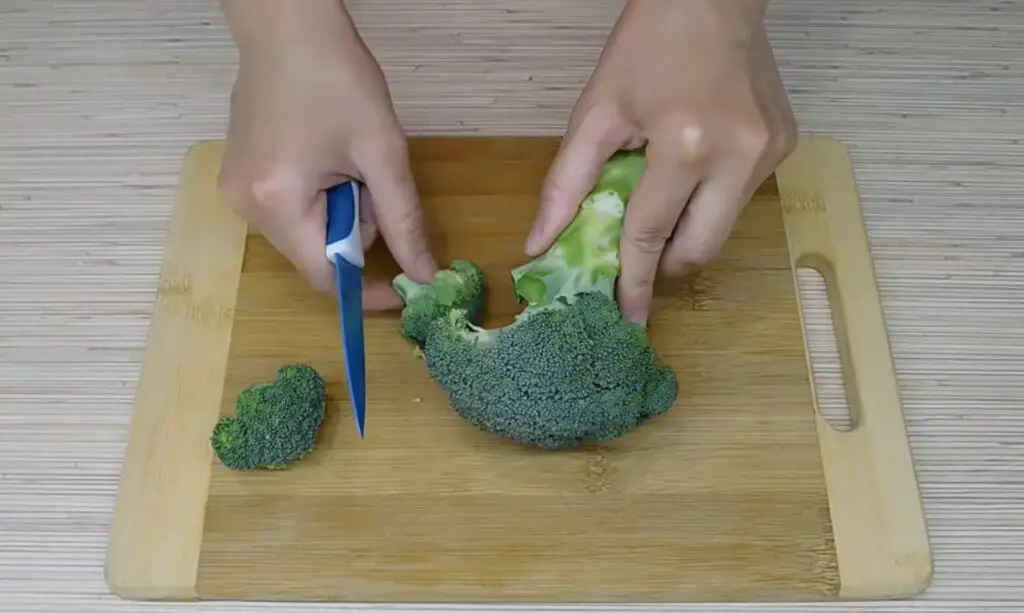
Avoid these common mistakes when making broccoli baby food: improper cooking techniques, adding too much water, not blending thoroughly, not introducing it gradually, using seasonings that are too strong, and not considering your baby’s allergies or digestive abilities. Keep it simple and nutritious for your little one’s taste buds and overall health.
When it comes to making broccoli baby food, there are a few common mistakes that you should avoid. By being mindful of these mistakes, you can ensure that you are providing the best and most nutritious food for your little one.
Here are some important points to keep in mind:
- Overcooking the broccoli and losing nutrients:
- It is crucial not to overcook the broccoli as excessive cooking can lead to the loss of important nutrients.
- Aim for a slightly tender texture, where the broccoli can be easily mashed with a fork.
- Using excessive amounts of water while cooking:
- Using too much water while cooking can result in valuable nutrients being leached out from the broccoli.
- For optimal nutrient retention, steam or lightly boil the broccoli using minimal water.
- Adding salt or sweeteners to the baby food:
- Avoid adding salt or sweeteners, such as sugar or honey, to the baby food.
- Babies have delicate taste buds, and introducing them to the natural flavors of broccoli without any added seasonings is best.
- Not introducing broccoli gradually and observing for any allergies:
- When introducing broccoli to your baby, start with small amounts and gradually increase the serving size.
- Watch for any signs of allergies, such as rashes or digestive issues, and consult with your pediatrician if necessary.
Remember, providing your baby with homemade broccoli baby food is a great way to introduce them to healthy vegetables. By avoiding these common mistakes, you can ensure that your little one gets the most nutritional benefits from their food.
Introducing Broccoli Baby Food To Your Baby’s Diet
Discover the perfect introduction to your baby’s diet with homemade broccoli baby food. Learn easy steps for making this wholesome option for your little one’s mealtimes.
Signs Of Readiness For Solid Foods
- Your baby can hold their head up steadily
- They can sit up with support or on their own
- They show an interest in what you’re eating and may try to reach for food
- They have doubled their birth weight and are at least 4-6 months old
Starting With Small Portions And Gradually Increasing
- Begin by offering a small spoonful of pureed broccoli to your baby
- Observe their reaction and take note of any allergies or digestive issues
- If there are no adverse reactions, gradually increase the portion size over time
- Start with one meal a day and slowly work your way up to three meals
Monitoring Any Adverse Reactions Or Digestive Issues
- Keep an eye out for symptoms of food allergies such as rash, vomiting, or diarrhea
- It’s normal for babies to initially have some gas or change in stool after introducing solids, but if these issues persist or worsen, consult a pediatrician
- Note any difficulty swallowing or breathing, which could indicate an allergic reaction
Incorporating Broccoli Into Other Meals And Recipes
- Mix pureed broccoli with other vegetables or fruits to create a variety of flavors and textures
- Combine it with rice cereal or oatmeal for added nutritional benefits
- Try adding cooked and finely chopped broccoli to mashed potatoes or scrambled eggs
- Experiment with broccoli in soups, stews, and pasta dishes for a healthy boost
Remember, every baby is different, so it’s important to monitor their individual reactions and consult with a healthcare professional if you have any concerns. Enjoy this exciting journey of introducing your baby to nutritious and delicious foods!
Frequently Asked Questions For How To Make Broccoli Baby Food
Is Broccoli OK for Baby Food?
Broccoli is safe and nutritious for baby food. It provides essential vitamins and minerals for healthy growth.
How Do You Wash Broccoli For Baby Food?
To wash broccoli for baby food, follow these steps: 1. Rinse the broccoli under cold water. 2. Use a vegetable brush to clean any dirt or debris. 3. Trim off the tough stem and cut the florets into small pieces.
4. Steam or boil the broccoli until it’s soft and can be easily mashed for baby’s food.
Conclusion
Incorporating broccoli into your baby’s diet can provide them with a host of essential nutrients and support their overall growth and development. By following the simple steps outlined in this blog post, you can easily make nutritious broccoli baby food at home.
Start by steaming or boiling the broccoli until it becomes soft and tender. Then, blend it into a smooth puree using a food processor or blender. If desired, you can also mix in other vegetables or fruits to add variety and flavor.
Remember to introduce new foods gradually and watch for any allergic reactions. By making your own broccoli baby food, you can have peace of mind knowing exactly what ingredients are going into your little one’s meals. So, start incorporating this green superfood into your baby’s diet and give them a healthy head start in life!

